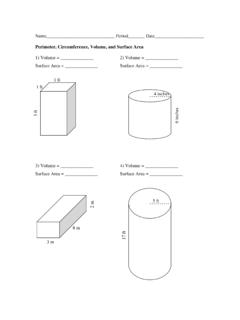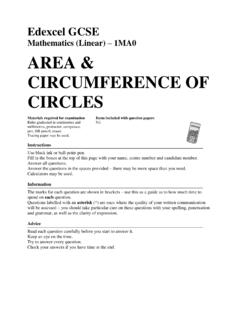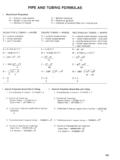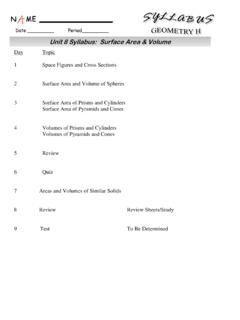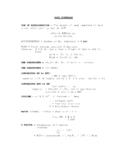Transcription of Health and Safety (Sharp Instruments in Healthcare ...
1 1 of 6 pagesHealth and Safety ExecutiveHealth and Safety ExecutiveHealth Services Information Sheet 7 HSE information sheetHealth and Safety (Sharp Instruments in Healthcare ) Regulations 2013 Guidance for employers and employeesThis information sheet is for Healthcare employers and employees. It will help you understand your legal obligations under the Health and Safety (Sharp Instruments in Healthcare ) Regulations 2013 (the Sharps Regulations). The Regulations implement aspects of the European Council Directive 2010/32/EU (the Sharps Directive) that are not specifically addressed in existing GB legislation. They will apply from 11 May 2013. All employers are required under existing Health and Safety law to ensure that risks from sharps injuries are adequately assessed and appropriate control measures are in place.
2 The Sharps Regulations build on the existing law and provide specific detail on requirements that must be taken by Healthcare employers and their contractors. This information sheet should be read in conjunction with other information on managing the risks of sharps injuries, and the associated risks of infection from blood-borne viruses. HSE guidance and links to other relevant guidance can be found on HSE s website. Which employers must take action on the Sharps Regulations? - regulations 3 and 4 The employer s duties in the Sharps Regulations only apply if you are either:an employer whose primary work activity is the management, organisation or provision of Healthcare (a Healthcare employer); ora contractor working for a Healthcare employer and your staff may be at risk of a sharps injury while on the premises of or working under the management and supervision of the Healthcare employer (for example laundry workers, caretakers, cleaners, waste disposal workers, bank nurses and locum doctors).
3 However, a contractor s duties will only apply to the extent of their control of work involving medical sharps. The main Healthcare employer and their contractors must co-operate and share information to ensure that risks of sharps injuries are adequately controlled and that they have the appropriate arrangements to comply with the Sharps Regulations, as required by the Management of Health and Safety at Work Regulations 1999. For most Healthcare employers and their contractors it will be clear that the Regulations apply to them. The Annex at the end of this information sheet provides examples where further clarification is likely to be helpful. How do the Sharps Regulations change my responsibilities for managing the risks from the use of sharps? Effective safe management of sharps, across all sectors, flows from the existing Health and Safety legislation.
4 In particular, the needs to assess the risks, provide appropriate information and training, and consult with employees. The Sharps Regulations build on the existing law and provide specific detail on requirements that must be taken by Healthcare employers and their contractors. These are: Use and disposal of medical sharps The Sharps Regulations follow the principles of the hierarchy of preventative control measures, set out in the Control of Substances Hazardous to Health Regulations (COSHH). However, they require that employers consider the additional risk control measures below: Avoid the unnecessary use of sharps regulation 5(1)(a) Needles, scalpels etc will remain essential tools for effective medical care. However, the employer should ensure that sharps are only used where they are required.
5 For example, organisations that have reviewed the use of sharps have identified staff using needles to carry out tasks for which they are not required (for example collection of urine samples from catheter bags). Needle-free equipment is available for certain procedures and should be used, where it is reasonably practicable to do so. 2 of 6 pagesHealth and Safety ExecutiveWhere it is not reasonably practicable to avoid the use of medical sharps, the Sharps Regulations require employers to: Use safer sharps (incorporating protection mechanisms) regulation 5(1)(b)The employer must substitute traditional, unprotected medical sharps with a safer sharp where it reasonably practicable to do so. The term safer sharp means medical sharps that incorporate features or mechanisms to prevent or minimise the risk of accidental injury.
6 For example, a range of syringes and needles are now available with a shield or cover that slides or pivots to cover the needle after use. The following factors should be considered:the device must not compromise patient care; the reliability of the device; the care-giver should be able to maintain appropriate control over the procedure;other Safety hazards or sources of blood exposure that use of the device may introduce;ease of use (taking into account the existing clinical practices commonly in use by the relevant Health professionals but not assuming custom and practice is safest);is the Safety mechanism design suitable for the application? The following are relevant:if activation of the Safety mechanism is straightforward, it is more likely to be used; if the Safety mechanism is integral to the device (ie not a separate accessory) it cannot be lost or misplaced; for many uses a single-handed or automatic activation will be preferable; an audible, tactile or visual signal that the Safety mechanism has correctly activated is helpful to the user; andthe Safety mechanism is not effective if it is easily reversible.
7 Safer sharps do not necessarily remove all risks associated with the use of a sharp. For example, a needle shield is activated after a procedure is completed, but a sharps injury to the Healthcare worker can occur during the procedure (eg when a patient moves unexpectedly) and a safer sharp will not prevent this. For some procedures, there may be more than one person involved in handling, sterilising or otherwise dealing with the sharps. The employer s COSHH risk assessment should consider all these aspects, and identify the appropriate equipment, safe procedures, personal protective equipment (PPE) and immunisation required at each stage. Involving the end users of the equipment and their representatives in the selection of safer sharps will help ensure that they use the new equipment safely, and any reduction in the number of sharps injuries is maintained for longer.
8 If a suitable safer sharp is not available to reduce the risk of injury, the employer should ensure that safe procedures for working with and disposal of the sharp are in place. In some circumstances, patients may provide needles (for example, for administration of insulin) which they expect a Healthcare worker to use and the employer has not had an opportunity to ensure that it is a suitable safer sharp . The employer s risk assessment should identify if their employees may be faced with such a request, and make arrangements to ensure that employees have safe systems of work and the appropriate information, training and equipment to deal with this situation. Prevent the recapping of needles regulation 5(1)(c)Injuries can occur after a needle has been used if the Healthcare worker holds the needle in one hand and attempts to place a cap on the needle with the other hand (so-called two-handed recapping).
9 Needles must not be recapped after use unless the employer s risk assessment has identified that recapping is itself required to prevent a risk (eg to reduce the risk of contamination of sterile preparations). In these limited cases, appropriate devices to control the risk of injury to employees must be provided. For example, needle-blocks can be used to remove and hold the needle cap and so allow safe one-handed recapping. Place secure containers and instructions for safe disposal of medical sharps close to the work area regulation 5(1)(d)Regulation 7(6)(c) of COSHH requires systems to dispose of contaminated waste safely. The Sharps Regulations supplement this by requiring that clearly marked and secure containers be placed close to the areas where medical sharps are used. Instructions for staff on safe disposal of sharps must also be placed in those areas.
10 In many Healthcare facilities sharps bins can be placed next to the Healthcare worker so they can drop the used sharp straight into it. For example, in wards this can be achieved by placing the sharps container on the dispensing trolley. However, some Healthcare workers do not operate in premises in which they have control, for example paramedics or Healthcare workers working in a patient s home. In these cases, the employer s risk assessment should select appropriate sharps, specify safe working procedures and provide suitable portable 3 of 6 pagesHealth and Safety Executivesharps containers and means for collection and replacement of those. Information and trainingThe Sharps Regulations supplement existing requirements to provide Health and Safety information and training for staff by requiring that it includes those matters listed below (from Schedule 1 and 2 of the Sharps Regulations), to the extent that they are relevant to the employee s information provided to employee regulation 6 Information may be provided in many forms, including safe operating systems, Safety guides, posters, information on internal staff websites.










